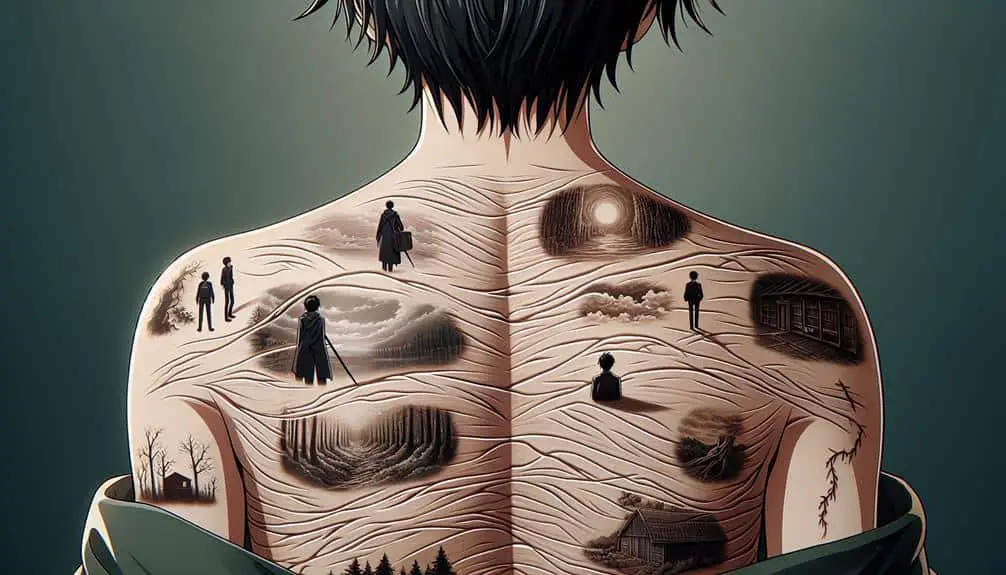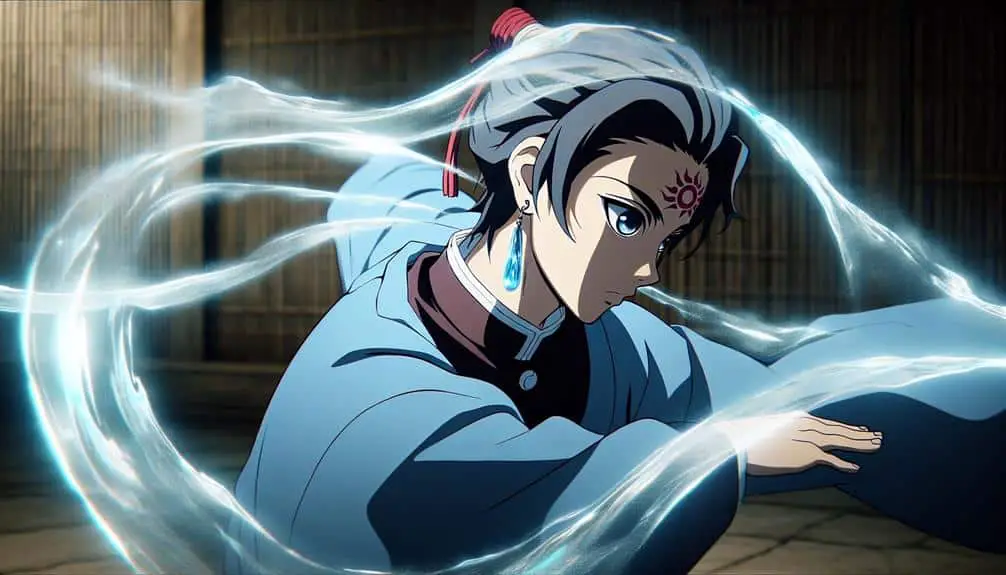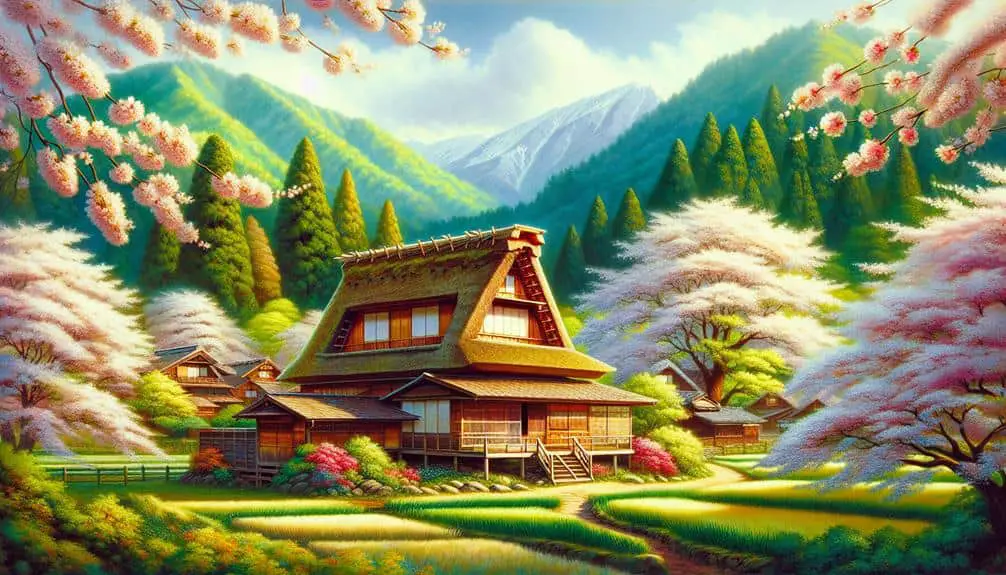Nichirin Blades are culturally significant in Demon Slayer due to their historical ties to demon-slaying traditions. Each blade symbolizes a slayer's dedication to fighting evil. The vibrant colors carry deep meanings linked to the wielder's traits. Sword-making in ancient Japan was a revered art with spiritual essence. These blades enrich viewers' experience by showcasing centuries-old beliefs. Understanding them sheds light on the characters' growth and the spiritual power they possess. The blades transcend mere weapons, embodying honor and strength. Unravel the layers of tradition, symbolism, and personal growth intertwined with Nichirin Blades in Demon Slayer.
Key Points
- Nichirin Blades symbolize commitment to vanquishing evil in the demon-slaying tradition.
- The colors of the blades reflect wielders' personality traits and strengths.
- Sword-making as an art form in ancient Japan imbued blades with spiritual qualities.
- Mastery of swordsmanship embodies tradition, discipline, and a code of ethics.
- The spiritual bond between wielders and their blades empowers character growth and transformation.
Origin and Symbolism of Nichirin Blades
Exploring the origins and symbolism of Nichirin Blades reveals a rich tapestry of cultural significance and historical context in the world of Demon Slayer. These swords, known for their vibrant colors and unique abilities, carry deep symbolic meanings that resonate throughout the series. The historical significance of Nichirin Blades lies in their association with the demon-slaying tradition of the Demon Slayer Corps, where each blade represents a slayer's commitment to vanquishing evil.
Symbolism plays an important role in the design and function of Nichirin Blades. The colors of these swords aren't merely for aesthetic purposes but hold profound meanings tied to the wielder's personality and strengths. The historical significance of these blades can be traced back to ancient Japan, where sword-making was considered an art form and swords themselves were imbued with spiritual qualities.
Understanding the symbolism and historical significance of Nichirin Blades enriches the viewer's experience of Demon Slayer, providing insight into the intricate world-building and cultural depth of the series.
Color Significance in Nichirin Blades
The vibrant colors of Nichirin Blades in Demon Slayer serve as key indicators of the wielder's personality traits and strengths, adding depth to the narrative and enhancing the cultural significance of these revered swords.
Each blade in the series is assigned a specific symbolic color that reflects the unique characteristics of the wielder. For example, Tanjiro Kamado's black Nichirin Blade symbolizes his unwavering determination and resilience in the face of adversity. In contrast, Zenitsu Agatsuma's yellow blade represents his hidden potential and growth throughout the series.
The symbolic colors not only differentiate the blades but also emphasize the individuality and strengths of the characters who wield them. This blade uniqueness ties into the traditional Japanese belief that objects, including swords, can possess spiritual energy and symbolism.
Mastery and Tradition of Swordsmanship
Mastery and tradition intertwine seamlessly in the art of swordsmanship, embodying centuries-old techniques and philosophies passed down through generations. The tradition of swordsmanship is deeply rooted in honoring the legacy of past masters, emphasizing discipline, respect, and continuous improvement. Training techniques are meticulously designed to develop not only physical prowess but also mental acuity, fostering a holistic approach to combat. Through rigorous practice and adherence to traditional forms, practitioners cultivate a deep understanding of the sword's capabilities and limitations.
Furthermore, the tradition of swordsmanship extends beyond mere technical skill; it encompasses a code of ethics and values that guide practitioners in their journey towards mastery. Respect for one's opponent, humility in victory, and dedication to constant self-improvement are core tenets instilled through the tradition of swordsmanship. By embracing these principles and training techniques, practitioners not only hone their physical abilities but also cultivate a deeper connection to the art form itself, perpetuating a legacy that transcends generations.
Spiritual Connection and Empowerment
Spiritual connection and empowerment are pivotal elements in the profound bond between a wielder and their Nichirin Blade in Demon Slayer, transcending mere physical combat prowess. The concept of spiritual empowerment runs deep in Japanese culture, where the sword symbolizes honor, loyalty, and strength. In the world of Demon Slayer, this connection is amplified through the unique properties of the Nichirin Blades, which not only serve as tools for combat but also as vessels for the wielder's spirit. The blades are more than just weapons; they're conduits through which the wielder channels their inner strength and resolve.
Culturally, the significance of this spiritual bond can't be understated. It reflects the values of discipline, dedication, and self-improvement that are highly regarded in Japanese society. Through their connection with their Nichirin Blade, characters in Demon Slayer undergo personal growth and transformation, not just regarding combat skills, but also within their inner strength and resilience. This spiritual empowerment serves as a driving force for the characters, shaping their actions and decisions throughout their journeys.
Influence on Character Development
Through the symbiotic relationship between wielders and their Nichirin Blades, a profound metamorphosis occurs in the characters' development in Demon Slayer. The process of forging a bond with their blade isn't merely a physical one but also a spiritual and psychological journey that greatly impacts character growth and personal transformation.
Tanjiro Kamado, for example, undergoes a remarkable evolution from a determined yet inexperienced demon slayer to a more skilled and emotionally resilient warrior. His interactions with his Nichirin Blade, which changes color as he progresses, symbolize his growth and reflect his inner strength and determination.
Similarly, characters like Zenitsu Agatsuma and Inosuke Hashibira experience a shift in their attitudes and abilities as they deepen their connection with their blades, highlighting the profound influence these weapons have on their development. Overall, the relationship between wielders and Nichirin Blades serves as a catalyst for inner change, pushing the characters to confront their fears, insecurities, and limitations, ultimately leading to a more profound sense of self-awareness and strength.




